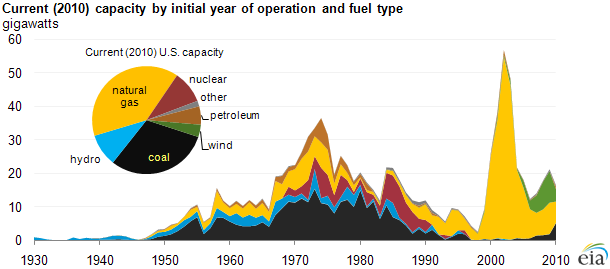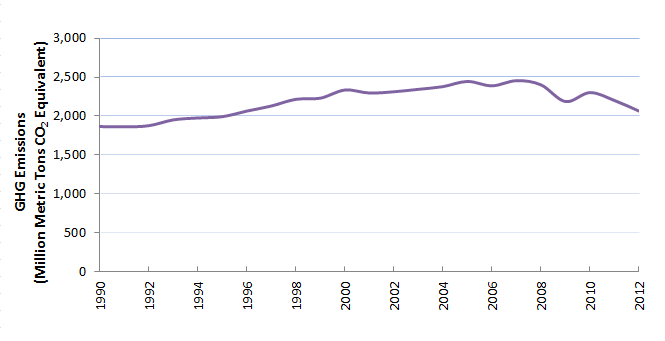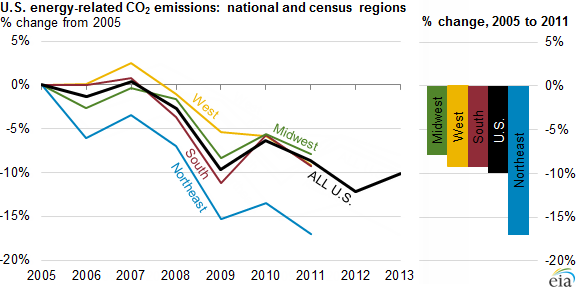Unless my editors (LCG Communications) decide differently, this blog will be posted about two weeks after the EPA and President Obama announced the new proposal to limit greenhouse gas emissions from existing power plants. My folder library is already full with reactions (I am writing this on June 3, one day after the announcement). I am sure that nobody will miss my immediate response and that the new policy will continue to be a central topic of discussion for the foreseeable future, especially as we approach the coming election and the presidential election that will follow.
The central focus of the proposal is to impose a limit on the greenhouse gas emissions of existing power plants, with the goal of reducing the carbon emissions by 25% below the reference year of 2005 by 2020 by and 30% by 2030. The program will be administered by the States and they can select among many options of implementation. The plan is now open to comments and most likely to court challenges. A day after the announcement of the plan, in the middle of my writing, Gina McCarthy, the head of the EPA declared that significant changes in the plan are possible after the comments period if States are able to show that they cannot meet the requirements – stay tuned.
The plan is being issued as a regulation of enforcement of the Clean Air Act, meaning that it does not need congressional approval. The plan is described in a 645 page document that very few people other than those directly involved in the drafting process (including me), had the opportunity to read and digest. One of the interesting points of the plan involves enforcement. Here I am going to directly quote from the planning document (page 610):
§ 60.5715 What is the review and approval process for my state plan?
The EPA will review your state plan according to § 60.27 except that under paragraph § 60.27(b) the Administrator will have twelve months after the date required for submission of a plan or plan revision to approve or disapprove such plan or revision or each portion thereof. If you submit a request for extension under § 60.5760(a) in lieu of a complete state plan the EPA will follow the procedure in § 60.5760(b).
§ 60.5720 What if I do not submit a plan or my plan is not approvable?
If you do not submit an approvable state plan the EPA will develop a Federal plan for your state according to § 60.27 to implement the emission guidelines contained in this subpart. Owners and operators of affected entities not covered by an approved state plan must comply with a Federal plan implemented by the EPA for the state. The Federal plan is an interim action and will be automatically withdrawn when your state plan is approved.
§ 60.5730 Is there an approval process for a negative declaration letter? No. The EPA has no formal review process for negative declaration letters. Once your negative declaration letter has been received, the EPA will place a copy in the public docket and publish a notice in the FEDERAL REGISTER. If, at a later date, an affected EGU for which construction commenced on or before January 8, 2014 is found in your state, a Federal plan implementing the emission guidelines contained in this subpart would automatically apply to that affected EGU until your state plan is approved.
There is no escape from the feeling that the structure of this major regulation has borrowed from the recent health insurance legislation (“Obamacare”). In fact, some of these similarities have been noted before.
The main objections that have circulated in the press over the last few days include the reference year, and the price. I have discussed some of the data that provide a solid grasp of the reference year in previous blog entries, and have reprinted some such sections below. As to the price, the US Chamber of Commerce has warned that it will cost about 50 billion dollars. This is a large sum for you and me but as Krugman commented in the NYT, the EPA claims a positive balance (we will save money) mainly through saving on health cost by reducing the use of coal. Both numbers are very soft numbers that depend on different assumptions of discounted rates of future costs. I will focus here on the reference year and on the States references. Figures 1 and 2 appeared in previous blogs. Figure 1 is the key. With few exceptions, new power plants that were constructed after 2000 are all natural gas and renewables. Coal, meanwhile is the major fuel of most old plants. The “simplest” way to reduce carbon emissions is to close old, coal fueled power plants. Depending on the overall energy demands, you either close the plant without constructing a new one or replace it with a natural gas, renewable or nuclear version.
Figure 1 (December 24, 2012 blog)
Figure 2 shows the total carbon emission in comparison to China, India, Russia and the EU.
The emissions of both the US and the EU peaked around 2005 and decreased after that year. In the US, the declining emissions mainly reflected a combination of the recession and the general shift to natural gas power plants.
 Figure 2 (October 15, 2012 blog)
Figure 2 (October 15, 2012 blog)
The new EPA regulations do not refer to total carbon emissions – only those made by the electrical power industry. Figure 3 shows the emissions that were released by the power industry. Again, the peak is in 2005, declining for the same reasons that I mentioned before. By establishing 2005 as the reference year instead of 2012, the EPA has made life a bit easier on everybody.
Figure 3 (From EPA website)
Figure 4 is probably the crux of the new regulations. The targets are specific to states. The reductions are individual state targets. States that were fueled by coal in 2005 and emit more than those that were not, can still emit more carbon in 2030. As can be seen in the figure, the Northeast, with its regional cap-and-trade agreement already in full swing, is more than half way to achieving the target. The rest of the country has some work to do.
Figure 4 (From EIA website)
The politics will be fascinating to watch, and we will not be the only ones watching. The global response to climate change will largely depend on the success or failure of this effort. So will the legacy of President Obama.



